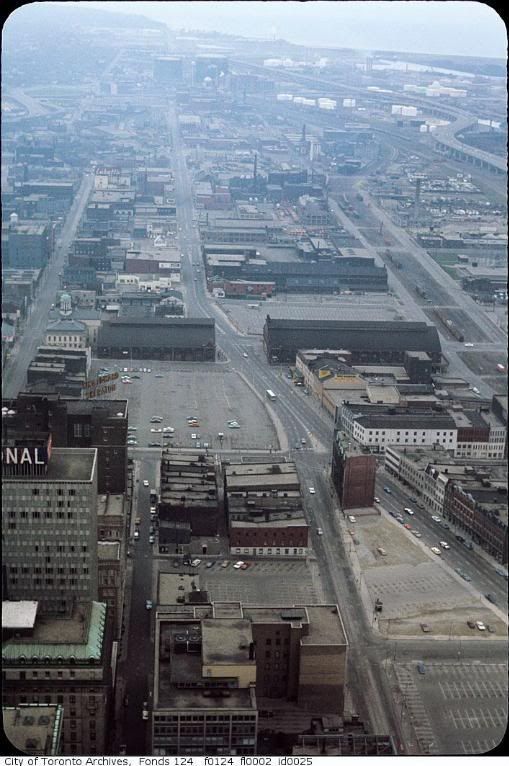"Iconic" can also refer to the collective statement - Dubai's mismatched, punchline skyline is iconic in an embarrassing sort of way; all those simple little white-painted houses on the Greek islands are as iconic as the Acropolis in making us think of that culture; Toronto's distinctive Victorian bay 'n' gables, and the many contemporary and seemingly interchangeable "boring glass boxes" now going up, which have a collective expression of Toronto's local design culture, for instance.
Strictly speaking, I think there is a distinction between "characteristic" and "iconic".
The Bay'n gabled streetscapes
might be considered as having a collective iconic status. They've been around a long time, are very pervasive, and will continue to be, as we aren't ripping down victorian neighbourhoods any more. Their iconic status may become more pronounced as time goes by, because as Toronto becomes more and more of a major city in the world, they will be considered an oddity, as big cities just don't have that kind of inner-city victorian residential vernacular. A lot of Toronto's quaint victorian "small town" look will remain a distinctive part of what is a fairly big global city.
As for the myriad of condo towers that have been, and will be built, I don't see any collective or individual iconic status for them, any more than the huge numbers of rectilinear apartment blocks of the 60's & 70's are. There will be a lot of them, but they will be mixed in with a very large. dense & diverse collection of high-rises. Yea, I can tell the difference between a aA designed glass tower and something else, but I bet most people can't. We will look back and be able to point out their work, just like we can Dickinson or Prii, but I just don't see it attaining an iconic status.
Vancouver's glass condo towers might, but that's because they are the dominating built feature there. Come to think of it, I don't see anything iconic in terms of built form in Vancouver at all...everything iconic about Vancouver has to do with the natural geography.
I think it's possible to lose iconic status as well. Look at the Royal York. For a good part of the 20th century, it was probably the #1 iconic building in Toronto. And its loss is not just do to the fact that it is no longer a dominating structure on the skyline, but the romance attached to it no longer plays a role in the zeitgeist of the city. And that's important. The Gooderham (flatiron) Building has maintained its iconic stature (and quite high on the list too), yet there really isn't that impressive in any way. It just has certain something about it. Union Station, as important, big and impressive as it is, was never iconic.





